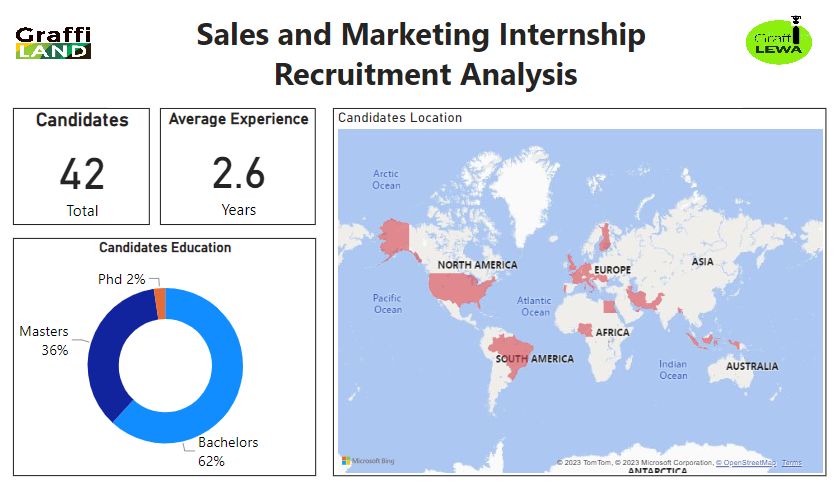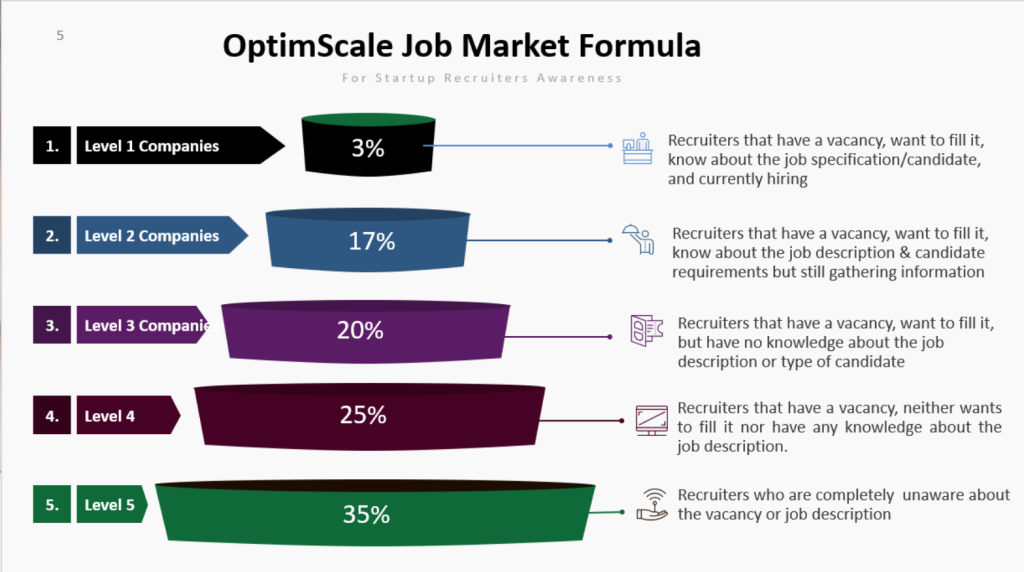The Job Mystery: How to Uncover and Unlock High Paying AI and Data Job Opportunities
To receive more of such FREE resources
1.0 Introduction
1.1 Navigating the Job Market Maze
Receiving a flood of job rejection emails has sadly become the new norm for job seekers in the field of AI and data. Even more disheartening are the success stories of those who endured hundreds of job applications before finally securing employment. This surge in job applications, favouring quantity over quality, has created an unprecedented challenge for job seekers. Yet, amidst this chaos, there are individuals who seem to effortlessly attract high-paying AI and data opportunities without actively pursuing them. What’s their secret?
1.2 Insights You Need to Know
Before I unveil the secret to their success, let’s establish some crucial insights. In the past, securing a decent job with just a bachelor’s degree was almost guaranteed for those born between 1965 and 1980 (Generation X). However, for those in Generation Y (early 1980s and early 1990s) and Generation Z (Mid 1990s to early 2010), the job landscape is vastly different.
Thanks to internet technology, the world has transformed into a global village. Geographical barriers have crumbled, allowing individuals from remote villages in Africa to communicate seamlessly with those in bustling cities across the globe. Remote work has emerged as the new standard, especially evident during the COVID-19 pandemic when most information technology-related jobs transitioned seamlessly to remote setups. Employers now have the flexibility to hire talents from any corner of the world, provided they have a reliable internet connection. This accessibility has democratised the job market, opening opportunities previously restricted by location.
Furthermore, there has been a significant surge in tertiary education enrolment, particularly with the rise of remote learning options. While possessing a degree was once prestigious for Generation X, it has become a standard expectation for younger generations (Generation Y and Z). The proliferation of online universities has made degrees accessible to anyone who can afford it with an internet connection, leading to a surplus of highly qualified graduates flooding the job market.
1.3 Case Study
In today’s job market, online job platforms like LinkedIn serve as the primary avenue for job applications, including AI and data opportunities. As such applying for jobs have been made easy and at the same time very challenging for job seekers. Also, employers are getting overwhelmed by the number of applications for open positions. At Graffiland, we recently experienced this firsthand when we posted an unpaid position for marketing and sales interns. Despite specifying our preference for African candidates with bachelor’s degrees, we were inundated with applications from non-Africans with masters degrees, including PhD holders. The overwhelming response forced us to close the job opening prematurely.

1.4 Understanding the Struggle
Given above insights, coupled with my daily interactions with non-tech professionals seeking to transition into AI and data roles, I empathise deeply with the frustrations you are facing with the today’s job market. I understand the disappointment of investing time and resources into education only to face constant rejections. That’s why I wake up every day driven by the mission to help non-tech professionals to transition to AI and data specialists within 3-6 months, guaranteeing at least 10-50% salary increase using the Education to Professional Employment (E2PE) framework.
2.0 Unlocking the Mystery
Earlier, I mentioned the existence of professionals whom high-paying opportunities seem to chase them effortlessly. The secret behind their success is what I aim to share with you in this article. In the following sections, we’ll delve into the distribution of AI and data opportunities and explore strategies to uncover and unlock them, maximising your chances of securing your dream job.
2.1 Distribution of AI and Data Opportunities
Recently, I stumbled upon an enlightening statistic regarding the distribution of opportunities across various types of companies. While this distribution reflects a broader trend in the job market, it closely mirrors the landscape of AI and data opportunities as well. Figure 2 provides a visual representation of this distribution, as per the OptimScale Job market formula by Dr. Abunde Fabrice (2023)

Outlined from to to bottom:
- Level 1: A mere three percent (3%) of companies have identified and defined a business problem requiring AI and data solutions, specifying the roles, skills, and technology needed. These are the opportunities often visible on job platforms.
- Level 2: Seventeen percent (17%) of companies identify a business problem requiring AI and data solutions but are still in the research phase regarding the necessary skills.
- Level 3: Twenty percent (20%) of companies recognise a business problem and are aware of AI and data as potential solutions.
- Level 4: Twenty-five percent (25%) of companies acknowledge a business problem but do not actively explore AI and data solutions.
- Level 5: Thirty-five percent (35%) of companies at this level are not aware of existing business problems, let alone considering AI and data solutions.
This distribution offers insight into how AI and data opportunities span different levels of companies. It’s important to note that a company can operate across multiple levels simultaneously, depending on various factors such as business problems and company size.
Now, if you solely rely on job platforms like LinkedIn, Indeed, or Glassdoor for AI and data opportunities, you’re essentially banking on that elusive three percent. Unfortunately, nearly every job seeker is vying for a slice of that pie. As mentioned earlier, the world has become a global village, with some of opportunities in the three percent (3%) accessible to qualified individuals irrespective of geographical location with internet access. So, pinning all your hopes on this tiny fraction is akin to betting a dollar for a chance at a million-dollar jackpot. While you can’t alter the distribution of this three percent (3%), you can leverage the remaining ninety-seven percent to your advantage.
In the following section, I will elaborate how you can unlock and capitalise on these remaining opportunities unaware by many. Mastering how to unlock these opportunities will empower you to navigate the job market on your terms and secure high-paying, value-driven AI and data opportunities.
2.2 Uncovering and Unlocking the 97% AI and Data Opportunities
To effectively navigate the landscape of AI and data opportunities, I’ll categorise strategies based on the company’s position in the funnel diagram provided earlier.
- Level 1: As previously mentioned, unlocking the tiny 3% typically involves the familiar tactics you know such as crafting a compelling CV or resume, registering on job platforms, and enabling job alerts to be among the first applicants. Here the competition is very high as almost everyone is scrambling for this tiny percentage.
- Level 2: To tap into the 17% of opportunities at this level, networking is key. Often, before a company publicises a job opening, internal employees are aware. You need to cultivate a robust network of connections who recognise your proficiency in specific AI and data skills. Such that you are notified about opportunities before they surface on job platforms. Being recommended by a trusted contact internally can catapult you ahead in the hiring process.
- Level 3: At this stage, leveraging your network remains crucial, but it’s also vital to vocalise your expertise in solving specific problems using AI and data skills. Opportunities at this level require a certain level of expertise. You need to engage with companies at this level by demonstrating how AI and data can address their identified business challenges. As such, you are positioning yourself as a proactive problem solver.
- Level 4: Unlocking the 25% of opportunities here requires additional effort. Companies at this level acknowledge their business problems. So you need to convince such companies that AI and data skills are what are needed to solve these problems. Showcasing successful case studies of how other companies have solved such related problems with AI and Data Skills is paramount. You definitely need to leverage your experience to establish credibility and trust.
- Level 5: Dealing with the 35% of opportunities where companies are unaware of their problems presents the greatest challenge. It will be fruitless initiating discussions around AI and data solutions with such companies. Instead, focus on educating them about their unrecognised challenges or the opportunities they are missing cause of the unseen problems. Once they acknowledge they have a business problem and also see the severity of the issue, you then introduce AI and data as potential solutions.
In general, as you descend the ladder, uncovering and unlocking AI and data opportunities becomes more challenging yet increasingly rewarding. Fewer competitors operate at lower levels of the ladder, offering you a distinct advantage. When you succeed in unlocking opportunities at the bottom level, you become an expert. You become the go-to person for such problems in your industry. Professionals who operate at the lower levels enjoy the luxury of opportunities and are highly paid.
This approach to uncovering high-paying opportunities requires a change in mindset. Conventionally, employees think like those in the 3%. But to operate at the bottom level, you need to adopt a proactive mindset and approach these opportunities with vigour.
3.0 Conclusion
If you have come this far, then I hope you are now aware of the secret to uncovering and unlocking high-paying AI and data opportunities in your industry. I agree it is quite challenging to operate at the bottom level of the diagram, but it is worth making the shift because the long-term benefits are exponential. Also, to help you make that shift, I want to introduce you to the framework I’m using to unlock high-paying AI and data opportunities. This framework is a six-phase process which, when implemented diligently, increases your chances of unlocking those high-paying opportunities. I call this framework the Education to Professional Employment (E2PE) framework. By downloading a FREE copy of this framework, you will gain the following:
- Uncover at least 3 tailored AI and Data career paths perfectly suited for you.
- Learn how to quickly and efficiently fill skill gaps with the guidance of an industry professional.
- Gain valuable work experience, build a professional personal profile, and create value-creating proposals and CVs to attract high-paying job opportunities.
Download your FREE copy of the E2PE Framework now and unlock high-paying AI and data opportunities.
I hope this article has shifted your perspective. We are in an era where you can uncover and unlock AI and data opportunities from anywhere with a good internet connection. Best of luck in uncovering and securing lucrative AI and data job opportunities.
Author: Ivo Kubam
Graffiland
Date: 25-04-2024
Found this article insightful?